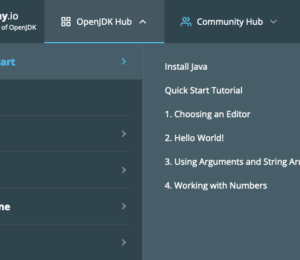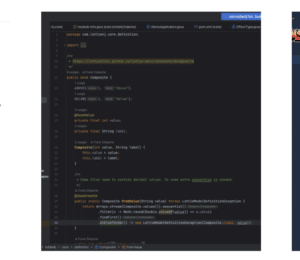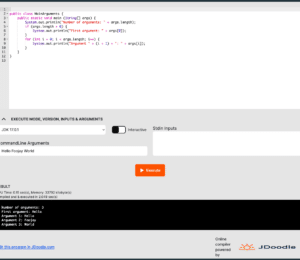Integrate executable Java code in your blog posts, part 2: How to use dependencies
- December 15, 2023
- 3386 Unique Views
- 2 min read
In a previous post, we explained how you can add executable Java code to your posts here on Foojay, by using JDoodle. In this post, you will learn how you can extend this with one or more libraries.
Define Dependencies
To integrate Java code in your post or page that needs dependencies, you need to specify them in the initial div with data-libs.
<div data-pym-src='https://www.jdoodle.com/plugin'
data-language="java"
data-version-index="4"
data-client-id="34d6e81ae45d88cdb9fb98fed1415b81"
data-libs="mavenlib1,mavenlib2">
<div data-type="script"><xmp>
// This is the place to put your Java code
</xmp></div>
</div>
<script src="https://www.jdoodle.com/assets/jdoodle-pym.min.js" type="text/javascript"></script>
The data-client-id can only be used for the Foojay website! Create your own account on the JDoodle site if you want to use this functionality on another website.
Example Application
For example, let's use the Jackson library to parse JSON.
<div data-pym-src='https://www.jdoodle.com/plugin'
data-language="java"
data-version-index="4"
data-client-id="34d6e81ae45d88cdb9fb98fed1415b81"
data-libs="com.fasterxml.jackson.core:jackson-annotations:2.16.0,com.fasterxml.jackson.core:jackson-core:2.16.0,com.fasterxml.jackson.core:jackson-databind:2.16.0">
<div data-type="script"><xmp>
import com.fasterxml.jackson.annotation.JsonCreator;
import com.fasterxml.jackson.annotation.JsonIgnore;
import com.fasterxml.jackson.annotation.JsonValue;
import com.fasterxml.jackson.databind.ObjectMapper;
import java.io.IOException;
import java.time.Instant;
import java.time.ZoneId;
import java.time.ZonedDateTime;
import java.util.Arrays;
public class JsonParsing {
public static void main (String[] args) {
var json = """
[
{
"level": 0,
"timestamp": 1675867184342,
"message": "Program started"
},
{
"level": 5,
"timestamp": 1675867185921,
"message": "File X not found"
},
{
"level": 9,
"timestamp": 1675867186357,
"message": "Error at line Y"
}
]
""";
try {
ObjectMapper objectMapper = new ObjectMapper();
LogMessage[] logMessages = objectMapper.readValue(json, LogMessage[].class);
System.out.println("Data loaded from JSON:\n");
for (LogMessage logMessage : logMessages) {
System.out.println("Log message at " + logMessage.timestamp()
+ "\n\tSeverity: " + logMessage.level()
+ "\n\tMessage: " + logMessage.message());
}
} catch (IOException ex) {
System.err.println("Json processing exception: " + ex.getMessage());
}
}
record LogMessage(int level, Long timestamp, String message) { }
}
</xmp></div>
</div>
<script src="https://www.jdoodle.com/assets/jdoodle-pym.min.js" type="text/javascript"></script>
Will produce the following output. Hit the "Execute" button to run the code.
Notice you can also select Java 21 now to execute this code!
Conclusion
Not only "simple" Java code can be added to blog posts. As we illustrated here, a more complex class with a record and Maven dependencies can be created and executed within a webpage.
In part 3 of the JDoodle posts, that will be published soon, we'll talk with the creator of JDoodle, Gokul Chandrasekaran.
Don’t Forget to Share This Post!












Comments (0)
No comments yet. Be the first.